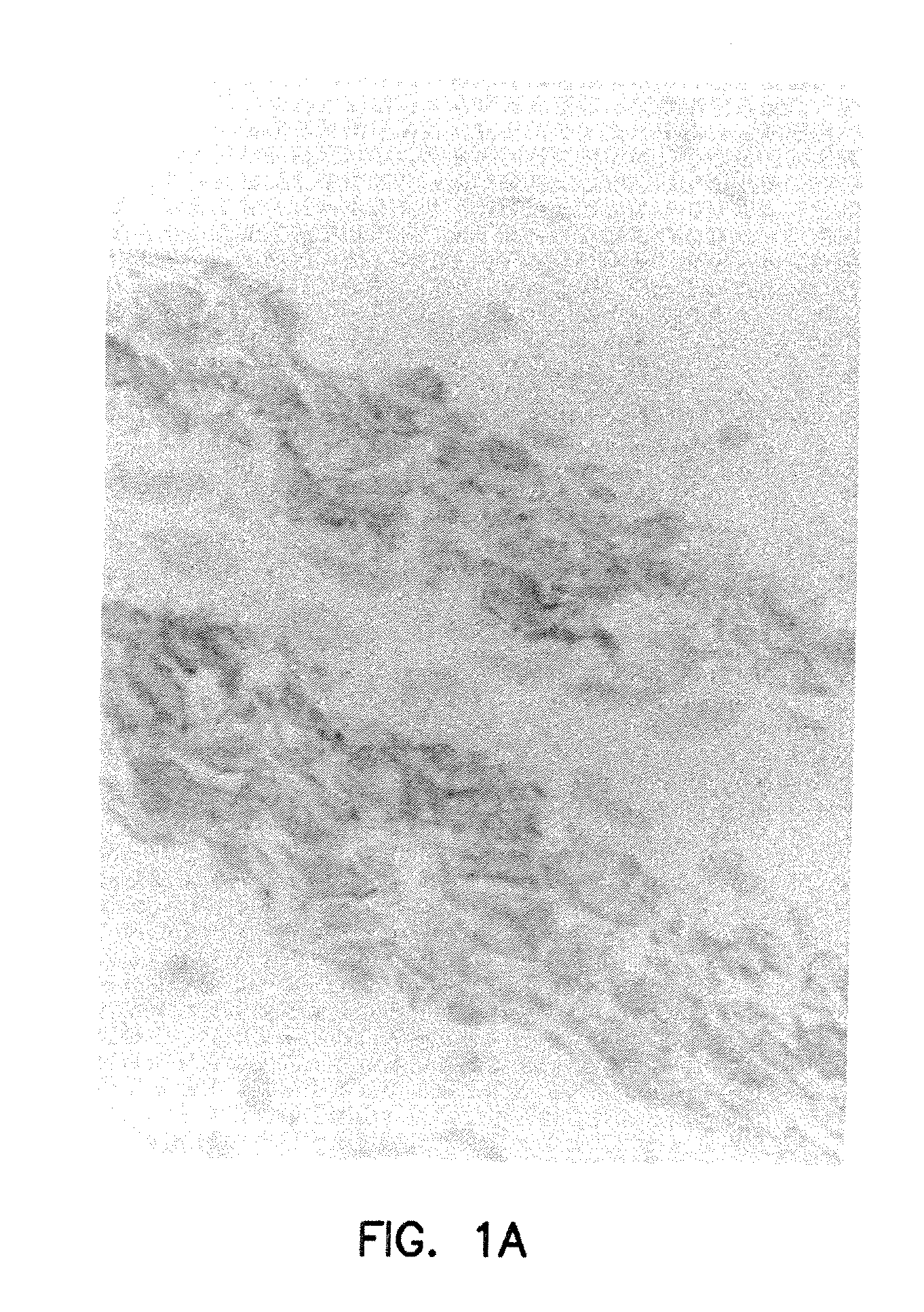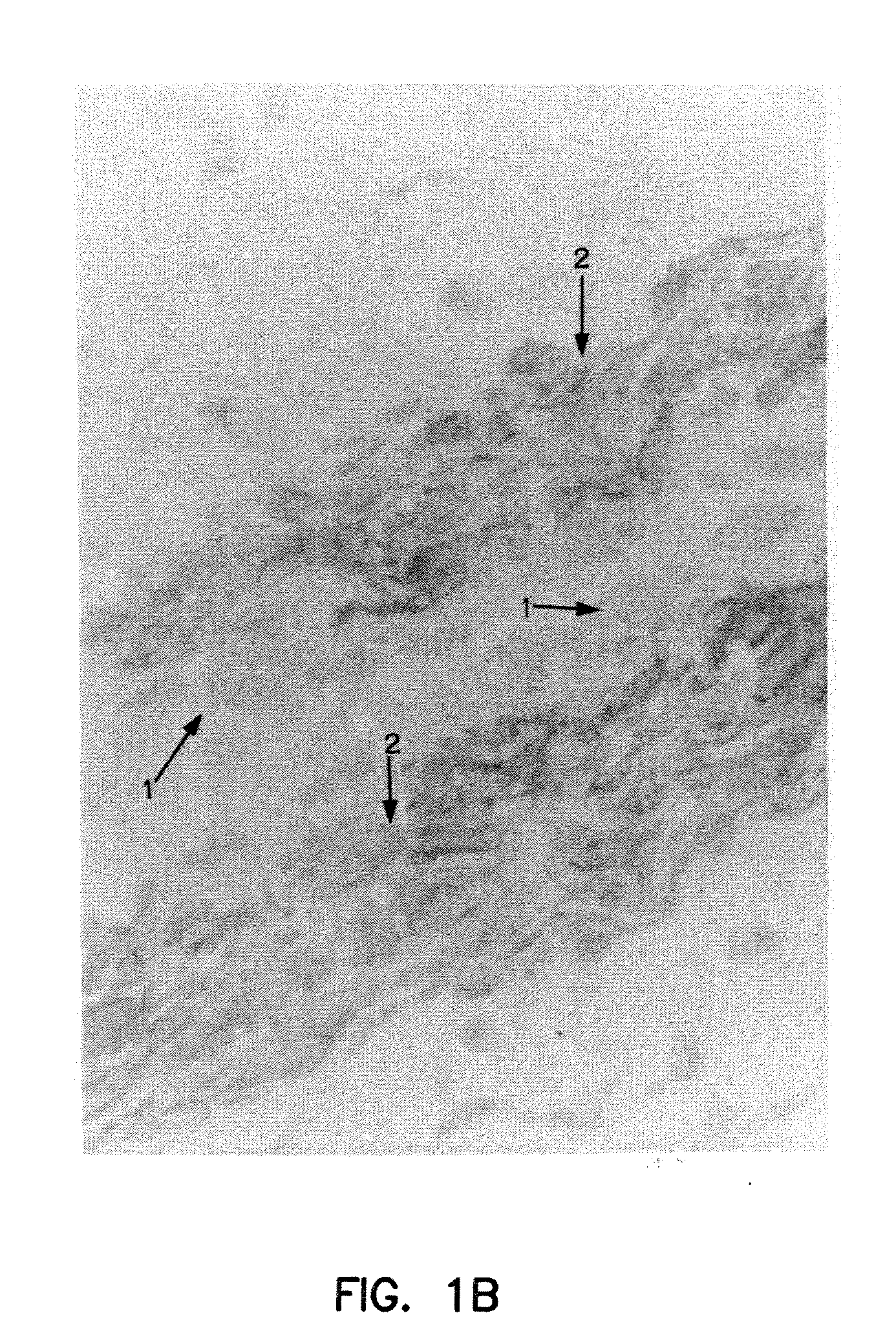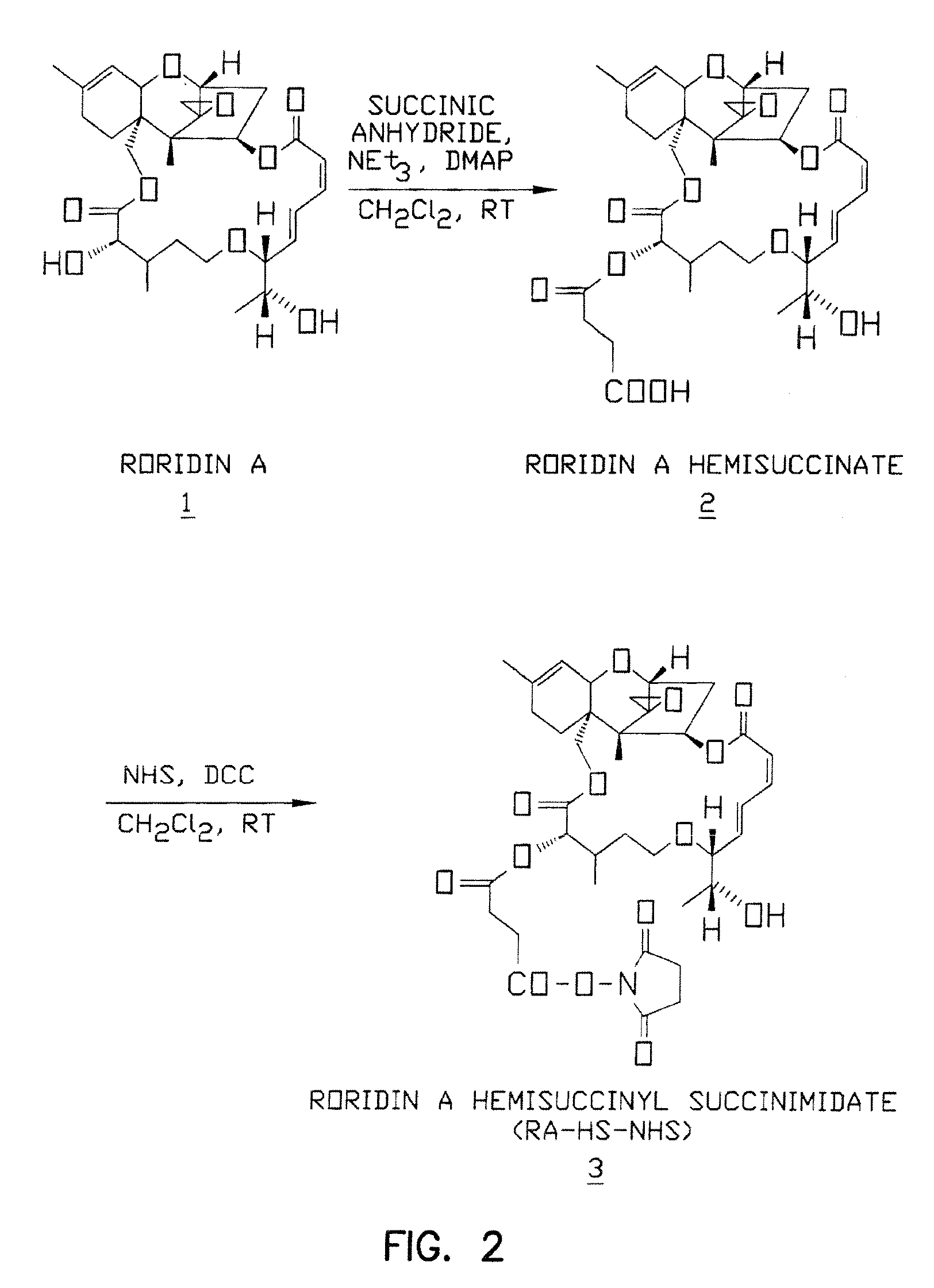Therapeutic inhibitor of vascular smooth muscle cells
a technology of vascular smooth muscle cells and inhibitors, which is applied in the direction of nitro compound active ingredients, instruments, prostheses, etc., can solve the problems of significant morbidity and mortality, no surgical intervention or post-surgical treatment (to date) has proven effective in preventing restenosis, and the proliferation or hyperactivity of pathological cells is reduced or eliminated. , to achieve the effect of reducing or eliminating the proliferation or hyperactivity of pathological cells, reducing or eliminating the pathological
- Summary
- Abstract
- Description
- Claims
- Application Information
AI Technical Summary
Benefits of technology
Problems solved by technology
Method used
Image
Examples
example 1
Binding to Vascular Smooth Muscle Cells in the Blood Vessel Wall In Vivo
[0176]FIG. 1A illustrates the binding of NR-AN-01 (a murine IgG2b MAb) to the smooth muscle cells in the vascular wall of an artery in a 24-year old male patient, 4 days after the i.v. administration of NR-AN-01. FIG. 1A is a photomicrograph of a histological section taken through the medial region of an arterial wall of the patient after NR-AN-01 administration, where the section was reacted ex vivo with HRP-conjugated goat anti-mouse IgG. The reaction of the HRP conjugate with NR-AN-01 MAb was visualized by adding 4-chloro-1-naphthol or 3,3′-diaminobenzidine tetrahydrochloride as a peroxidase substrate (chromogen). The reaction product of the substrate forms an insoluble purple or dark brown precipitate at the reaction site (shown at #2, FIG. 1B). A counter stain was used to visualize collagenous extracellular matrix material (shown at #2, FIG. 1B) or cell nuclei (#1, FIG. 1B). Smooth muscle cells are visuali...
example 2
Therapeutic Conjugates Containing Trichothecene Therapeutic Agents
[0177] Conjugates of NR-AN-01 and Roridin A were constructed by chemically coupling a hemisuccinate derivative of the trichothecene cytotoxin (as described below) to a monoclonal antibody designated NR-AN-01. Two conjugates were prepared, one coupled at the Roridin A 2′ position and one at the 13′ position. Two schemes were used in this synthesis, as depicted in FIG. 2 and FIG. 3. The conjugate was then purified from unreacted Roridin A by PD-10 SEPHAROSE® column chromatography (Pharmacia; Piscataway, N.J.), analyzed by size exclusion high pressure liquid chromatography, and the column fractions were characterized by SDS-PAGE and isoelectric focusing (IEF), as described below.
[0178]FIG. 2 shows diagrammatically the first reaction scheme for synthesis of Roridin A hemisuccinyl succinimidate (RA-HS—NHS) through a two step process with reagents: succinic anhydride, triethylamine (NEt3) and dimethyl amino pyridine (DMAP...
example 3
Kinetics of Binding to Smooth Muscle Cells
[0200] For administration by i.v. catheter, it is desirable that the therapeutic conjugates of the invention be administered in less than 3 to 5 minutes, so that blood flow can be reestablished in the patient. Therefore, studies were conducted to determine the binding kinetics of a smooth muscle binding protein with a Ka of >109 liter / mole. Because human vascular smooth muscle cells grow slowly in culture, and baboon smooth muscle cells were found to express the human CSPG cell surface marker, BO54 baboon artery smooth muscle cells and human A375 M / M (melanoma; ATCC #CRL1619) cells bearing CSPG surface marker were used in many of the studies described in the EXAMPLES, below.
[0201] For the kinetic binding studies, A375 M / M and BO54 cells were seeded in sterile 96 well microtiter plates at 2500 cells / well. Plates were wrapped in aluminum foil, and incubated at 37° C. overnight in a humidified atmosphere of 5% CO2 / 95% air. After approximately...
PUM
 Login to View More
Login to View More Abstract
Description
Claims
Application Information
 Login to View More
Login to View More - R&D
- Intellectual Property
- Life Sciences
- Materials
- Tech Scout
- Unparalleled Data Quality
- Higher Quality Content
- 60% Fewer Hallucinations
Browse by: Latest US Patents, China's latest patents, Technical Efficacy Thesaurus, Application Domain, Technology Topic, Popular Technical Reports.
© 2025 PatSnap. All rights reserved.Legal|Privacy policy|Modern Slavery Act Transparency Statement|Sitemap|About US| Contact US: help@patsnap.com



